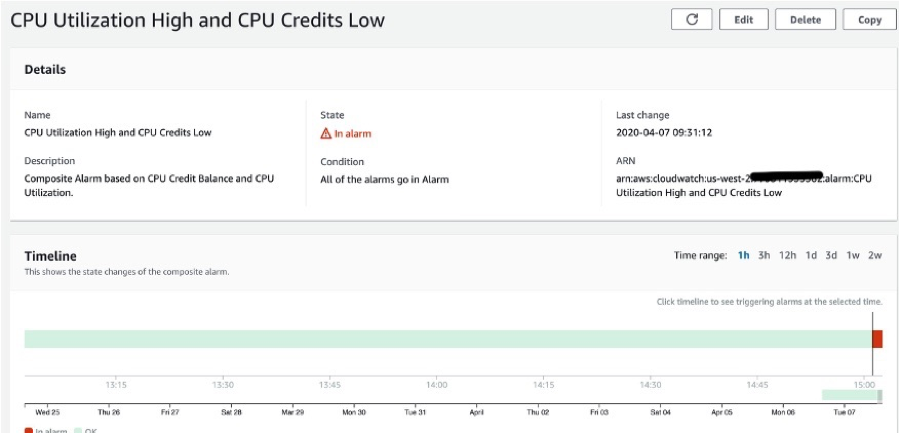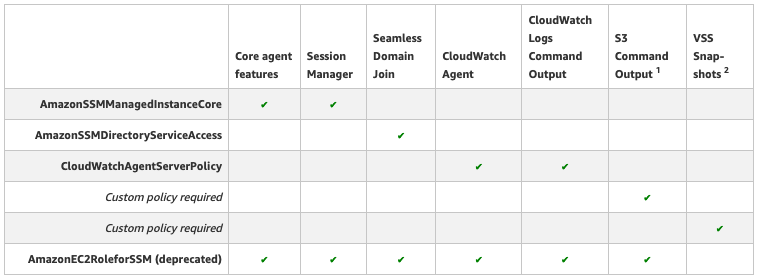AWS Cloud Operations & Migrations Blog
Category: Learning Levels
Using State Manager over cfn-init in CloudFormation and its benefits
Introduction If you have deployed Amazon Elastic Cloud Compute (EC2) instances via AWS CloudFormation, you most likely want to install software or configure the operating system of the instance. To accomplish this, you may have used cfn-init, one of the CloudFormation helper scripts available to AWS customers since February 2012. However, since that time AWS […]
Manage your Oracle JDK licenses with AWS License Manager
You can use AWS License Manager to track Oracle Java/JDK usage on Amazon Elastic Compute Cloud (Amazon EC2) instances and on-premises servers. If you’re already running Amazon Corretto (Amazon’s distribution of the OpenJDK), then you can probably stop reading now. This blog explains how License Manager can track license usage of other applications in your […]
How to optimize assessment of cloud services
As my colleague Ilya Epshteyn introduced in his blog titled “How financial institutions can approve AWS services for highly confidential data,” common across the financial services industry is a formal assessment process for cloud services. These assessment processes vary in depth and breadth, striving to determine which cloud services will be best suited to fulfill […]
Managing resources using AWS CloudFormation Resource Types
Both custom resources and resource types are used to create an AWS CloudFormation resource that allow you to manage third-party resources. For example, during the creation of a simple website you may want to provision a third-party website monitor, which has a public API. In this case, you would develop and use a resource that […]
Improve monitoring efficiency using Amazon CloudWatch Composite Alarms
OVERVIEW Amazon CloudWatch alarms help customers improve infrastructure monitoring efficiency by reducing the time to detect, triage, and diagnose issues that impact workload performance. CloudWatch alarms can be used extensively as a means to alert customers when application and infrastructure metrics exceed static or dynamically set thresholds. On March 4, 2020 AWS released CloudWatch composite alarms to extend existing […]
Keep up on the latest from AWS Organizations–Spring 2020
The team here at AWS Organizations has been busy developing new features to make it easier for you to manage multiple AWS accounts, whether you are automating new account creation, consolidating resources into a single bill, or maintaining access safeguards around your resources. There are many new announcements at AWS, so we’re starting this quarterly […]
Setting up custom AWS Config rule that checks the OS CIS compliance
AWS announced that AWS Systems Manager’s Run Command now offers Chef InSpec audits through the AWS-RunInspecChecks document. This is a significant win for Systems Manager enthusiasts and other users who prefer an OS-based compliance check solution rather than using a whole new cloud service. This blog post is not about how to keep an OS […]
Governance, risk, and compliance when establishing your cloud presence
June 22, 2021: We’ve updated this post to reference the recently published Management & Governance Lens, an extension of the AWS Well-Architected Framework. When speaking with the business and technology leaders I work with, they express the need to bring new products and services to market quickly. They must also stay secure while doing so. […]
Applying managed instance policy best practices
Since AWS Systems Manager was launched, the service has continued to add new features for customers to use. Many features are enabled by granting your Amazon EC2 instances and on-premises servers access to Systems Manager using an AWS Identity and Access Management (IAM) role with the necessary permissions. To provide customers more flexible, fine-grained permission […]
Monitor your private internal endpoints 24×7 using CloudWatch Synthetics
Introduction Since Amazon CloudWatch Synthetics launched in 2019, Synthetics canaries have become the first line of defense to reliably alert developers if their public endpoints, including REST APIs and URLs, show unexpected latencies or availability drops. In addition, Synthetics canaries can also monitor for broken links, or unauthorized content changes resulting from phishing, code injection, […]







